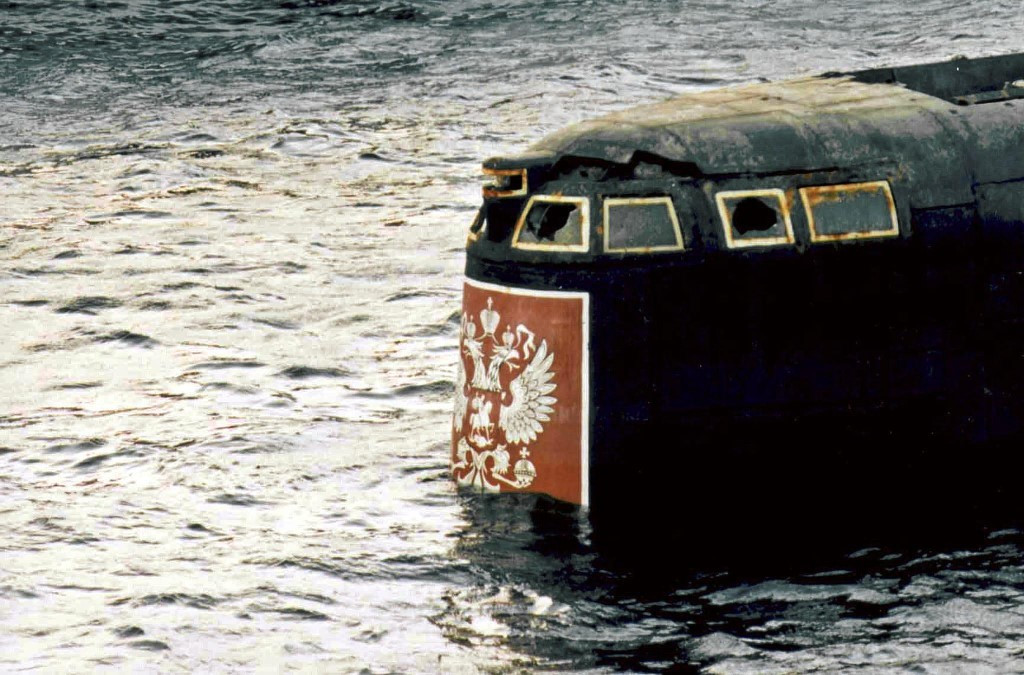Popular Reads
Top Results
Can't find what you're looking for?
View all search resultsPopular Reads
Top Results
Can't find what you're looking for?
View all search resultsSinking feeling: List of major submarine disasters
In July 2019, a fire onboard the nuclear-powered Russian deepwater research submarine Losharik killed 14 crewmembers. Five of those onboard survived, according to reports, and the submarine was recovered and repaired.
Change text size
Gift Premium Articles
to Anyone
 The conning tower of the Kursk nuclear submarine appears at the surface in the port of Roslyakovo, near Murmansk, 23 October 2001. The Kursk nuclear submarine surfaced for the first time 23 October 2001 after a number of still-unexplained explosions sank the vessel with 118 men on board in August 2000. (AFP/EPA)
The conning tower of the Kursk nuclear submarine appears at the surface in the port of Roslyakovo, near Murmansk, 23 October 2001. The Kursk nuclear submarine surfaced for the first time 23 October 2001 after a number of still-unexplained explosions sank the vessel with 118 men on board in August 2000. (AFP/EPA)
T
he Indonesian Navy (TNI) is searching for its submarine KRI Nanggala-402 after it lost contact with the vessel in waters off Bali on Wednesday. Here are some other notable submarine accidents:
Losharik fire
In July 2019, a fire onboard the nuclear-powered Russian deepwater research submarine Losharik killed 14 crewmembers. Five of those onboard survived, according to reports, and the submarine was recovered and repaired.
ARA San Juan lost
The Argentinian diesel-electric submarine disappeared while on patrol in November 2017. After weeks of search and rescue efforts, it was declared lost along with all 44 people aboard. Its wreckage was discovered the next year in about 900 metres of water.
Kursk catastrophe
On Aug. 12, 2000, the Russian guided missile submarine K-141 Kursk sank to the floor of the Barents Sea after two explosions in its bow. All 118 men aboard the nuclear-powered sub died. After recovering the remains of the dead from the sub, officials determined that 23 crew members, including the Kursk's commander, had survived the initial accident before suffocating.
Sinking of the K-8
A fire that broke out aboard the Soviet attack submarine K-8 on April 8, 1970 disabled the nuclear-powered vessel in the Bay of Biscay, forcing the crew to abandon ship. The crew boarded the sub again after a rescue vessel arrived. But the sub sank while under tow in heavy seas, taking 52 submariners with it.
The Scorpion vanishes
In May 1968, the US Navy nuclear-powered attack submarine Scorpion disappeared in the Atlantic Ocean with 99 men aboard. The wreckage was found in October about 400 miles (644 km)southwest of the Azores islands, more than 10,000 feet (3,050 meters) below the surface. There have been several theories for the disaster: the accidental release of a torpedo that circled back and hit the Scorpion, an explosion of the sub's huge battery, even a collision with a Soviet sub.
The sinking of K-129
The K-129, a nuclear-powered Soviet ballistic missile submarine, sank on March 8, 1968, in the Pacific Ocean, taking all 98 crewmen with it. The Soviet navy failed to locate the vessel. A US Navy submarine found it northwest of the Hawaiian island of Oahu at a depth about 16,000 feet (4,900 meters). A deep-sea drill ship, the Hughes Glomar Explorer, was able to salvage part of the sub in a secret operation. The remains of six Soviet crewmen found in the sub were buried at sea.
The Thresher implosion
On April 10, 1963, the US Navy's nuclear-powered attack submarine Thresher was lost with all 129 men aboard. The sub broke apart in 8,400 feet (2,560 meters) of water during deep-dive trials southeast of Cape Cod, Massachusetts. According to US military reviews of the accident, the most likely explanation is that a pipe joint in an engine room seawater system gave way, shorting out electronics and triggering a shutdown of the vessel's reactor that left it without enough power to stop itself from sinking.
K-19 nuclear accident
The K-19, one of the first two Soviet nuclear ballistic missile submarines, had been plagued by breakdowns and accidents before its launch. During its first voyage, on July 4, 1961, the sub suffered a complete loss of coolant to its reactor off the southeast coast of Greenland. The vessel's engineering crew sacrificed their lives to jury-rig an emergency coolant system. Twenty-two of the 139 men aboard died of radiation exposure. The remaining 117 suffered varying degrees of radiation illness. The accident was depicted in the 2002 movie "K-19: The Widowmaker."
Read also: Indonesia searching for missing submarine with 53 on board









